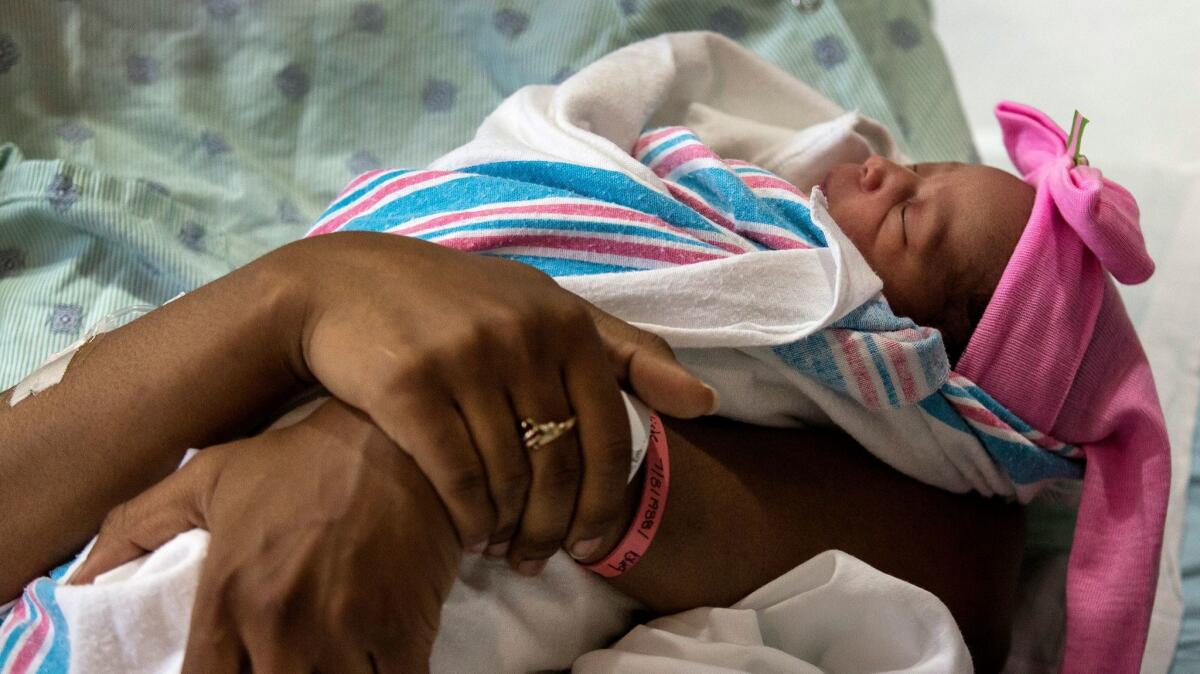Op-Ed: Where do babies come from? Until recently, even genius scientists had no idea

- Share via
By way of a break in this polarized era, let’s briefly consider the single topic that men and women of every culture and nationality have happily agreed on, from the beginning of time to this very minute — babies are good. But until astonishingly recent times, nearly every aspect of where babies come from was utterly mysterious.
The titans of the scientific revolution had no notion. Leonardo da Vinci did not know, Galileo did not know, Isaac Newton did not know.
They knew, that is, that men and women have sex and as a result, sometimes, babies, but they did not know how those babies are created. They did not know that women produce eggs, and when they finally discovered sperm cells, they did not divine that those wriggly tadpoles had anything to do with babies and pregnancy. (The leading theory was that they were parasites, perhaps related to the newly discovered mini-creatures that swam in drops of pond water. This was Newton’s view.)
It took until 1875 to sort out the riddle of sperm and egg.
For centuries, scientists struggled to find out if the woman merely provides a fertile field for the man’s seed, or if she produces some kind of seed of her own. They did not know how twins come to be. (Too much semen? Two bouts of sex in quick succession? Sex with two different men?)
They did not know if conception is more likely on the night of a full moon or a new moon or if timing makes any difference at all. They did not know, though they assumed, that a baby has only one father, as it has only one mother. They did not know why babies resemble their parents, and sometimes one parent more than the other.
This was not because our scientific predecessors were foolish. Many were dazzlingly intelligent and diligent. But nature guards her secrets closely. For one thing, sperm and egg are hidden and tiny. The human egg, though it is the largest cell in the body, is only the size of the period at the end of this sentence. Sperm cells are the smallest in the body, far too little to see with the naked eye. (An egg outweighs the sperm cell that fertilizes it by a million to one, the difference between a Thanksgiving turkey and a housefly.)
Religious faith made discovery all the more challenging. In the early years of the modern age, science and religion were not rivals but allies. All the great lights of the scientific revolution were devout. All of them took for granted that, by studying God’s works, they were exalting his creation. But God was not simply the Creator who had shaped the stars and planets and sculpted the whale’s fin, the eagle’s beak, and Adam and Eve; he was the only being with the power to create life. How could it be, then, that an ordinary couple huffing and puffing in the dark could create a new being? This riddle preoccupied the West’s greatest thinkers for more than two centuries.
Two more problems conspired to befuddle our scientific ancestors. One was practical. Virtually without exception, the scientists wrestling with the mystery of life were men. More than that, they took for granted that women were their physical and mental inferiors. Aristotle spoke for many when he described females as “mutilated males.”
Since the scientists’ goal was to understand how men and women, together, create babies, to start with the assumption that one of the two participants wasn’t up to much was to ask for trouble.
A second problem was more abstract. The seemingly straightforward question where do babies come from led scientists into a philosophical fog; they found they had to grapple with the far more slippery what is the nature of life?
It took until 1875 to sort out the riddle of sperm and egg. That spring, a vain, grumpy German scientist named Oscar Hertwig stared down a microscope at a sea urchin egg. (The eggs were a scientific favorite because they were see-through and, if you happened to have any extras at the end of the day, delicious.) Hertwig pushed a drop of sea urchin semen near the egg and saw what no one had ever seen until that moment: the process of fertilization play out in full view.
Today, scientists still cannot explain one of the simplest questions of all — not where do babies come from, but where does consciousness come from? Why is it that a robot, even one that can find its way around the room and beep and blink and play chess, is simply a lifeless collection of parts, whereas we humans are self-aware, swimming in a sea of smells and sights and memories?
For our forebears in centuries past, the riddle of life seemed every bit as intractable as the riddle of consciousness does today. Now we know how living creatures work, though for millennia the deepest thinkers on Earth could only guess. And today every 10-year-old can say where babies come from. That’s progress, but we shouldn’t be too smug.
Every generation makes the mistake of thinking that the escalator runs only as high as their floor. Not so. We can be sure that in centuries to come, our descendants will look back at us and quote our earnest beliefs and shake their heads in astonishment.
Edward Dolnick is the author of “The Seeds of Life: From Aristotle to da Vinci, from Sharks’ Teeth to Frogs’ Pants, the Long and Strange Quest to Discover Where Babies Come From.”
Follow the Opinion section on Twitter @latimesopinion or Facebook
More to Read
A cure for the common opinion
Get thought-provoking perspectives with our weekly newsletter.
You may occasionally receive promotional content from the Los Angeles Times.









